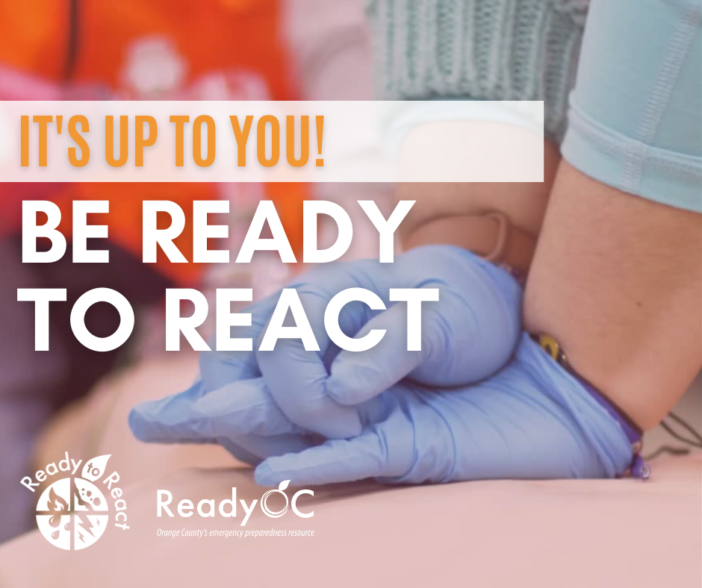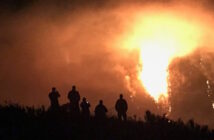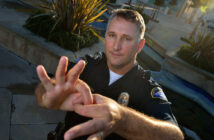Orange County residents can best cope with natural and man-made disasters by being ready in advance.
Disasters can happen at any time. They can be man-made or natural. They can be sudden or unfold over a longer period of time. They can vary in scope and severity and can strike without warning.
Because of this, experts repeat the same mantra – be prepared, be prepared, be prepared.
“Being prepared is not only self-service, but also a public service so we can help each other,” said Christian Erickson, Community Preparedness Officer for FEMA District 19.
“We’re used to the idea that when we contact 9-1-1, someone will come and help us,” said Steve Rhyner, Emergency Operations Coordinator for Santa Ana. “In the case of a disaster, we need to be our own first responders so we can take care of our homes, ourselves, our families and our neighbors.”
September is National Preparedness Month and local officials are urging residents to get into the proper preparedness mindset.
Locally, ReadyOC is the go-to site to help Orange County residents think about, and prepare, in case disaster strikes. As part of its overall message and in coordination with September’s National Preparedness Month, the group has launched its new campaign “Ready to React.”
According to Ready OC, “Ready to React is an initiative created to educate the public on what to do during disasters before first responders can reach them. First responders try to get to the scene as soon as possible, but it can take minutes, hours, or days to reach you, depending on the type and scale of the disaster. Knowing how to be prepared and react can save you and your loved ones.”
The more ready you are, the better your odds of pulling through a disaster.
And while FEMA continues to persistently push the preparedness message, with nearly 92 percent of respondents in a 2021 national poll professing awareness of preparedness, only 44 percent of respondents claimed to be prepared.
Disasters are a part of life
Residents of Southern California pay a steep price for idyllic surroundings. The state is in the midst of a historic drought. The summers are longer and hotter than previous generations and the fire season is essentially year-round. It only takes a spark to unleash massive devastation.
According to the Washington Post, wildfires have burned twice as many trees as 20 years ago. Orange County is less than two years removed from the Silverado and Bond fires. The former burned nearly 12,500 acres, injured two firefighters, and led to the evacuation of 90,000 residents; the latter torched more than 6,600 acres and destroyed 31 structures.
And just when fires, drought and heat have become expected, a recent report by a couple of climatologists from UCLA warns the state is overdue for a drenching winter and the “broadly underappreciated risk” of mega-flooding.
Be ready to react
On the Ready to React page, residents can find quick information, videos, downloadable lists and links for information on a variety of different topics including first aid, cellular tips, emergency response and public alert systems. Residents can also learn how to build an emergency kit, plan for different disaster and sign up for text alerts that are released when disasters happen.
First responders and law enforcement are trained for disasters. Although civilians are not, Community Emergency Response Training (CERT) notwithstanding, the Ready to React tips can help residents prepare for the “in-between” moment of a natural or man-made disaster. That is after a disaster but before first responders arrive on scene. By being ready and understanding basic response protocols, you can be an enormous help to responders and those around you.
“Having yourself prepared takes off some of the thought and burden off so that when it hits you can help people in need,” Erickson said.
Erickson and Rhyner both say that even a little preparation is better than nothing.
Not everyone has the time or money for full preparedness and education and language barriers can further complicate preparedness.
Rather than being overwhelmed by trying to be fully prepared for any and all disasters, experts say break it down into manageable pieces.
Erickson says a number of steps to being prepared are low or no cost. Such as signing up for free services that will inform you when disasters hit.
Locally, AlertOC offers detailed area-specific information.
The State of California has its Governor’s Office of Emergency Services (Cal OES) at www.caloes.ca.gov and www.listoscalifornia.org. Like ReadyOC and Alert OC, the state’s websites are repositories of information about disaster awareness and preparedness.
“Start with the little basics,” Rhyner suggests. “You don’t need to go all in with six months of survival gear.”
Get your go-kits ready
A Get A Test kit page on Ready OC, as well as similar features on other preparedness sites, are great resources of items to consider for go-kits residents should prepare to be better ready for disasters. Suggestions range from the obvious to the obscure. Food, water, first aid, sure.
Remember you don’t need to assemble everything at once. You can start off with basics and build out.
As you build up your kit, you can start to think about other supplies specific to your personal needs. How about prescription medicine, extra reading glasses or contact lenses or diapers? If you live in a fire prone area, items like insurance and homeowner documents might be important.
Also, since there is no guarantee where one will be in a disaster, having go-kits in home, car and office are worth considering.
Check out more than one ready site. Although many suggestions overlap, you might find something on an item you hadn’t thought of on one site, but not another. Matches, pens or pencils and paper?
Experts say although emergency responders try to reach everyone as soon as possible, depending on the size and scope of a disaster, help might be days away, so be prepared to self-sustain for several days not just hours.
Basic services such as electricity, gas, water, sewage treatment and telephones may be cut off for extended periods.
In compiling a kit, first and foremost, make sure you have the basics of survival of a minimum of three days: water, at least a gallon per person per day; food that is nonperishable and easily stored; warm clothing and bedding.
Assemble items in backpacks, duffel bags or other containers that you can lift and carry quickly.
Other items to consider: As disaster can strike while at work or traveling, FEMA recommends storing emergency supplies in your vehicles in addition to your home. Include, flares, tools, inclement weather gear, and connectors to plug electronic devices into your car.
If you start to get into the preparedness mode, courses like CERT, Community Emergency Response Teams, which are more intensive, next level preparedness and trains residents in life-saving, rescue and organizing techniques. Most OC cities offer CERT programs and information is available on their home sites.
Planning is preparedness
Because disasters don’t keep schedules, making family emergency plans with contingencies is important. Discuss strategies for communication, evacuation if necessary and reunification.
Families can be in many places in the course of a day, making communication vital to know where everyone is at all times. If evacuation is called for, learn evacuation routes and gathering places. Have a plan for how to get back together after a disaster.
Contact list and important numbers should be kept, updated and displayed prominently. Also enter them into all cellphones. Have trusted out-of-town contacts, as it is sometimes easier to call out than locally in a disaster.
Practice and hold household meetings to discuss strategies and scenarios and sending sample messages. Empower your kids to become part of the process and quiz them about the family plan. Arrange places to gather in case of emergency: in home, in the neighborhood, elsewhere
Be informed. Residents can sign on to AlertOC for information when disasters hit.
See something say something
Although California has been spared from the worst terrorist attacks, but not immune, and other manmade disasters, it is important to be vigilant and aware. Safe OC is part of the U.S. Department of Homeland Defense’s Counterterrorism Bureau. Its three-pronged message is to notice your surroundings, use common sense and, most important, call local authorities if something doesn’t seem right.
The Red Cross has information online on what you can do before, during and after a potential terrorist attack.
As with natural disasters, it is important to have a communication plan, emergency kit and reunification strategy. Also, if you have school-aged children, learn the school’s emergency plans and procedures.
Learn more: https://www.ready.gov/september and https://www.readyoc.com.
 Behind the Badge
Behind the Badge




